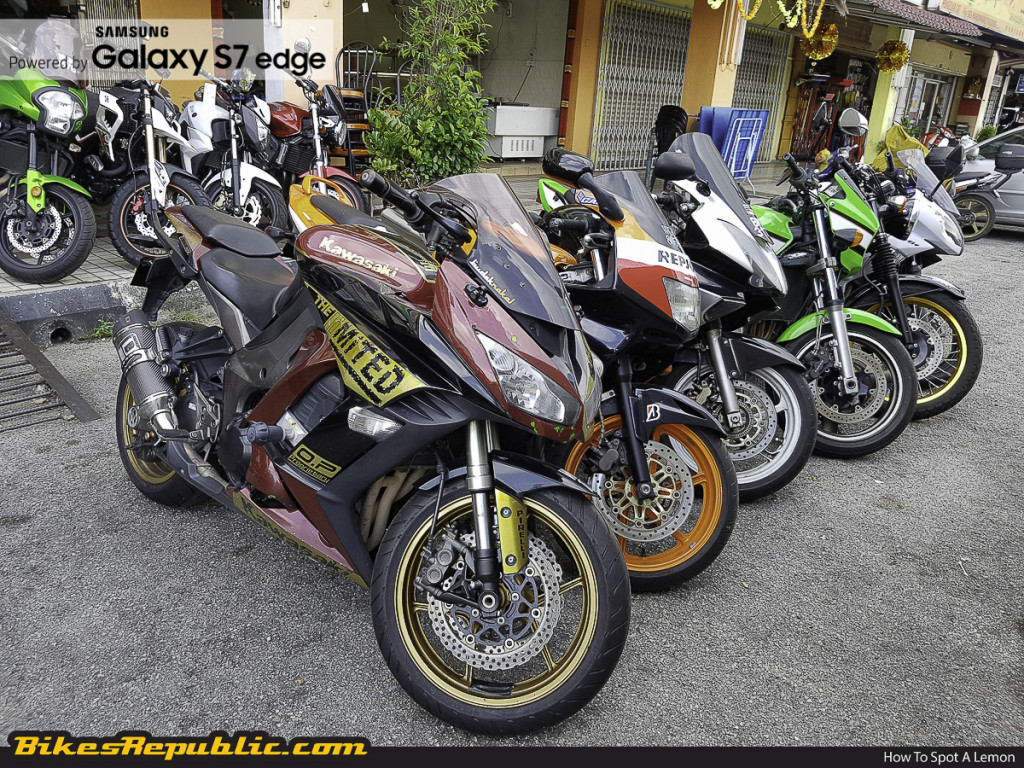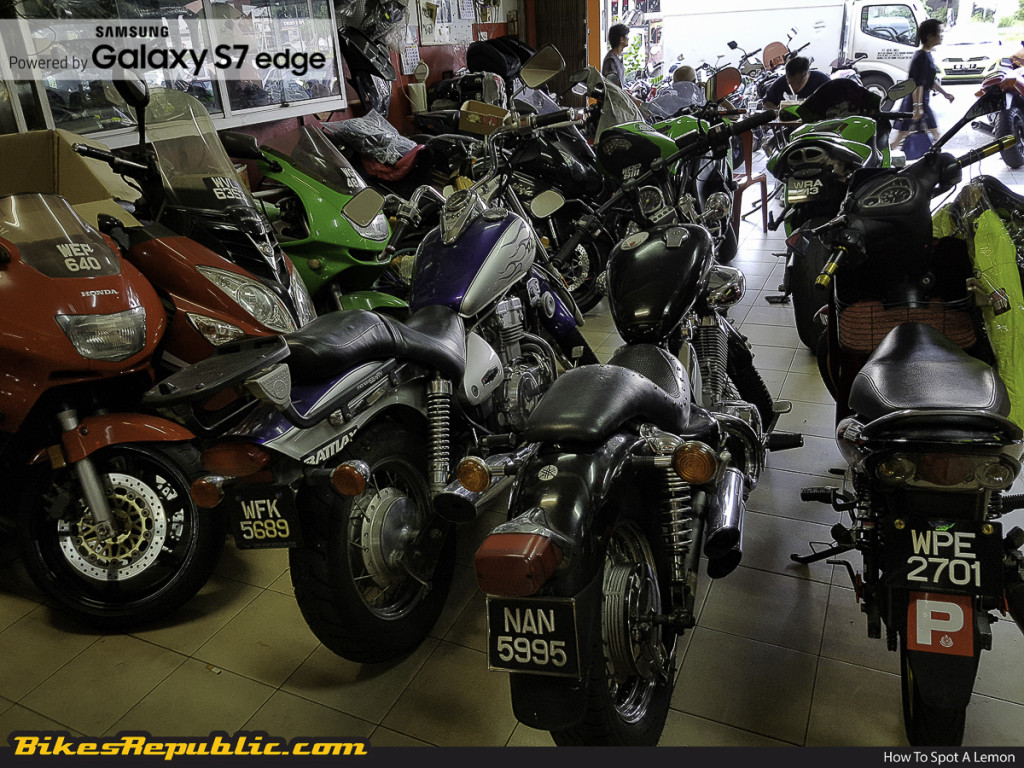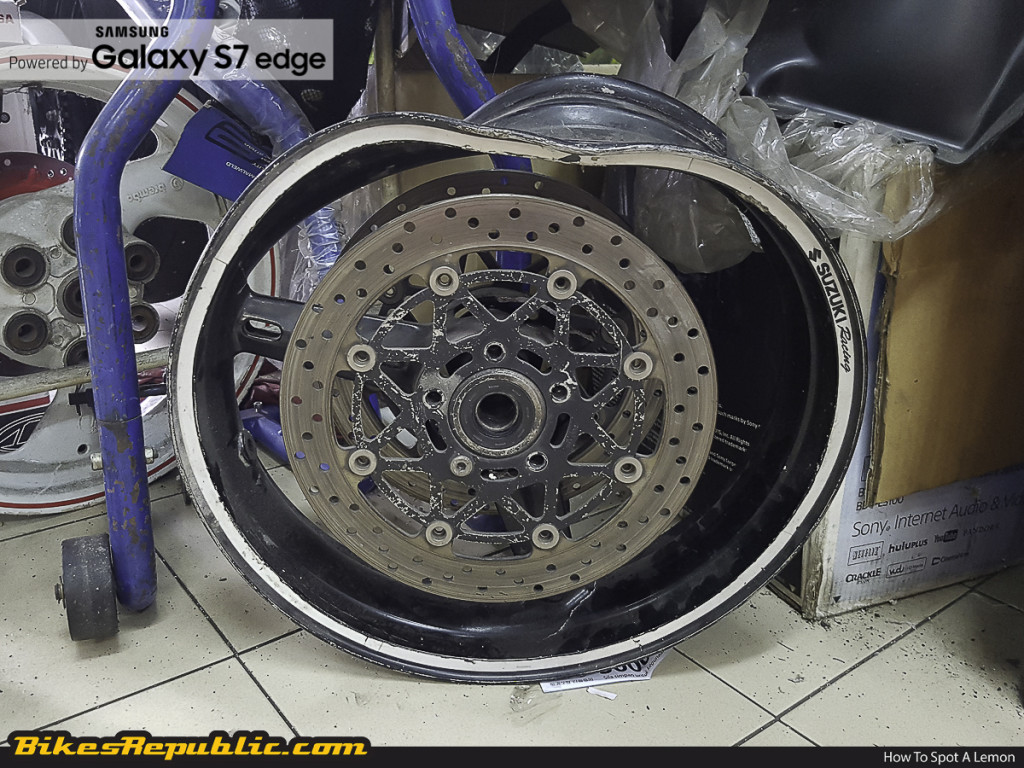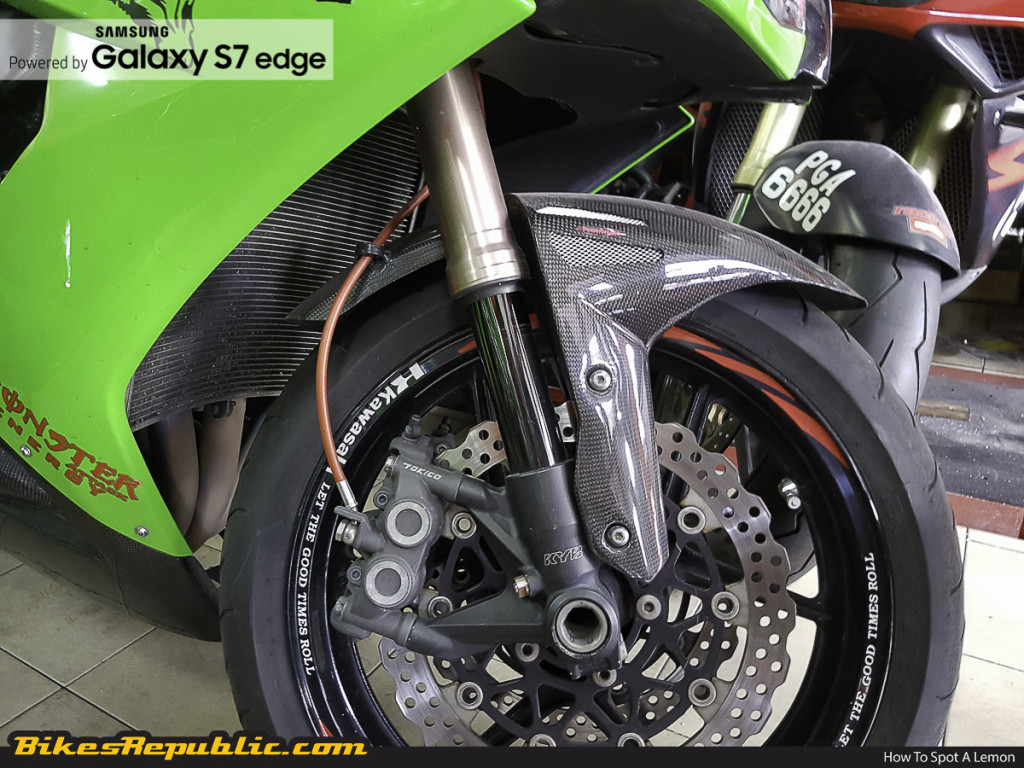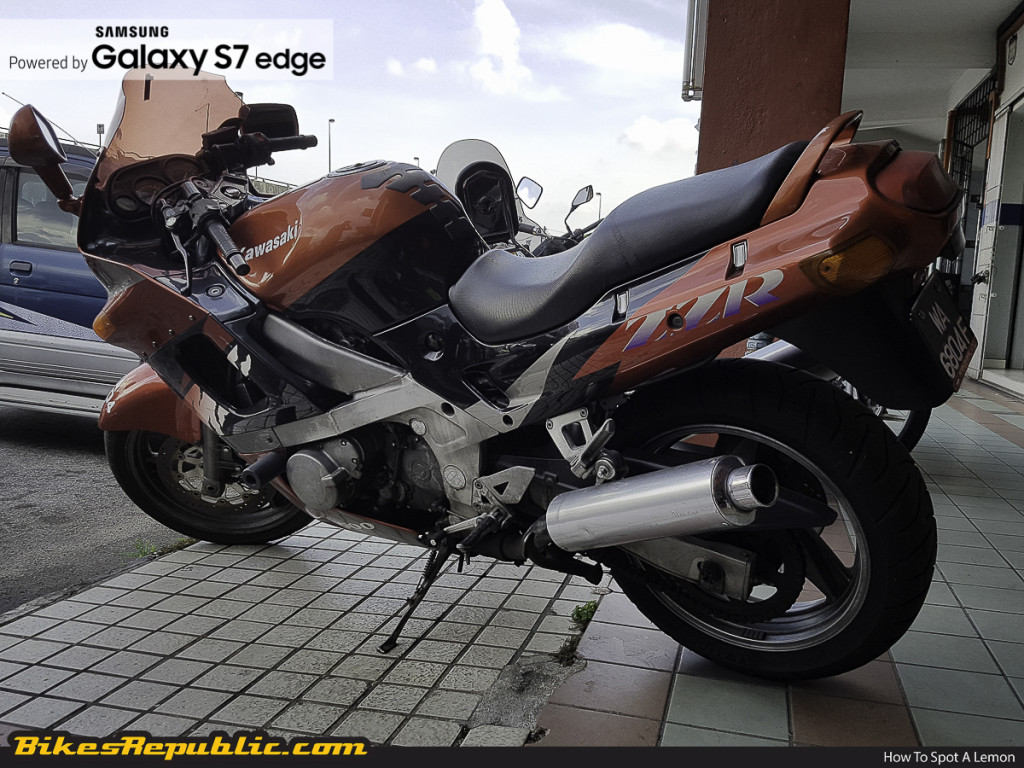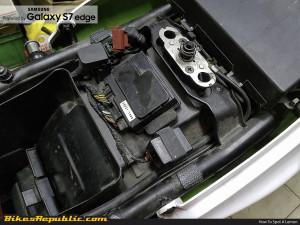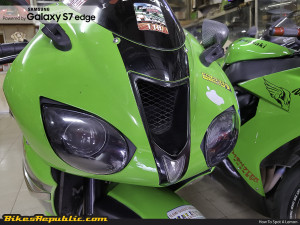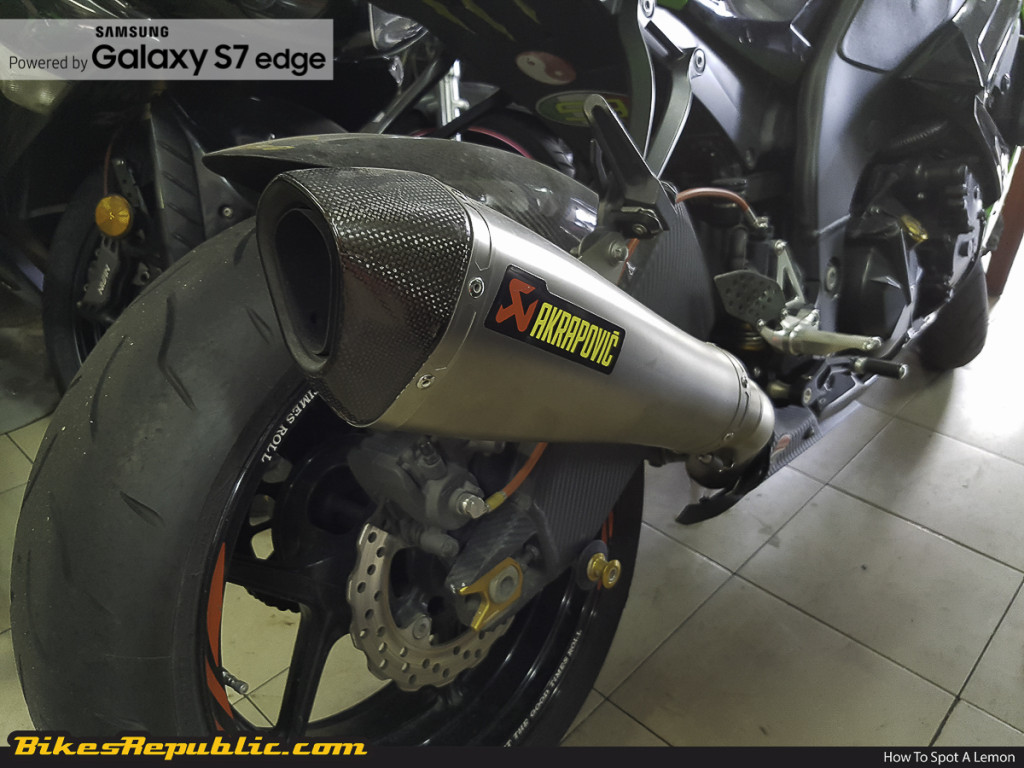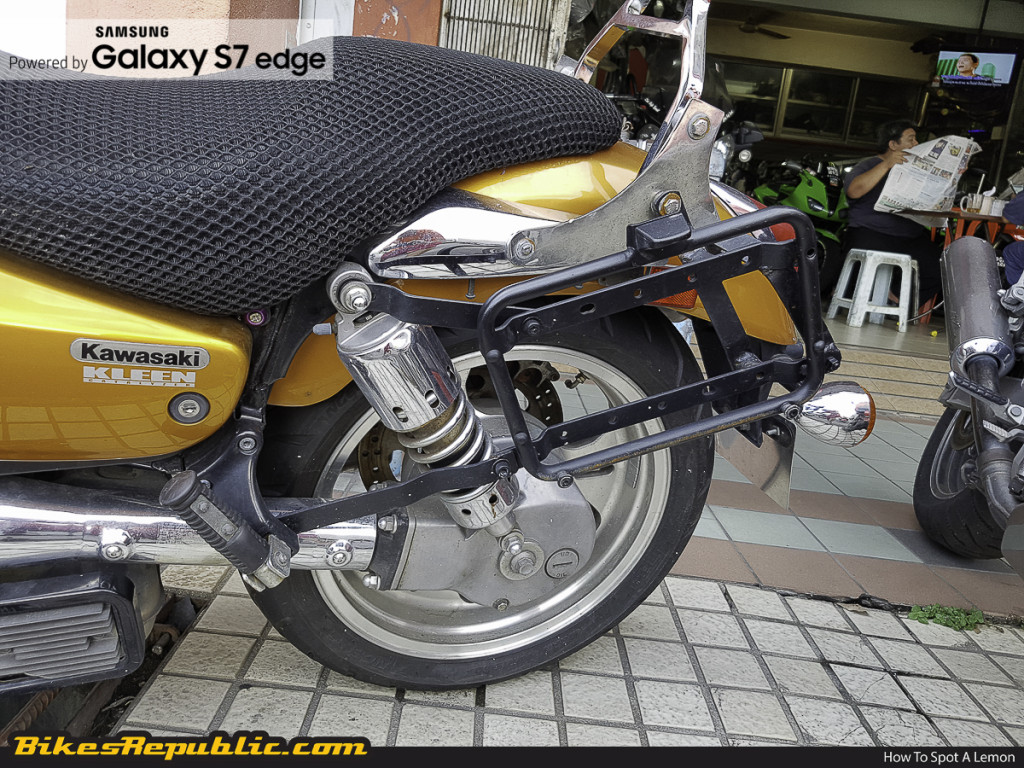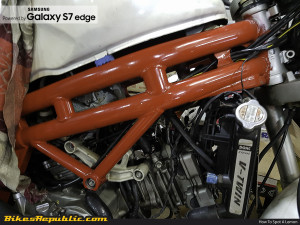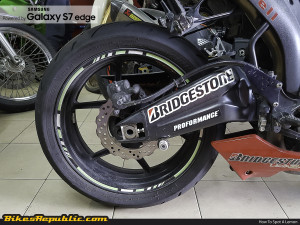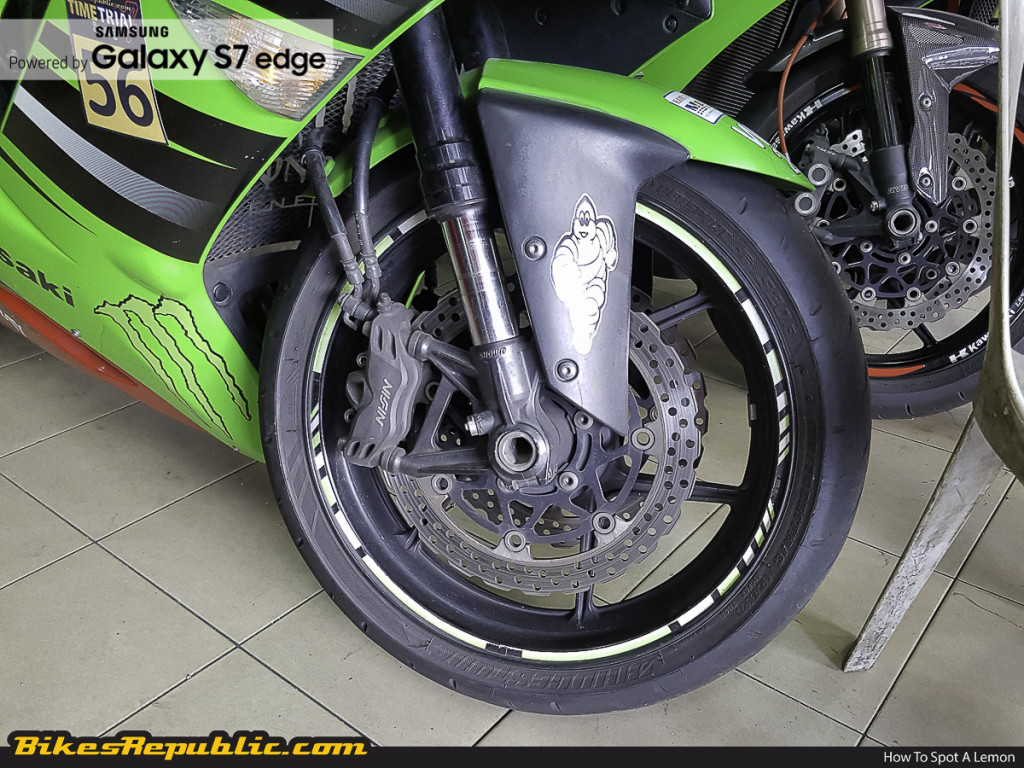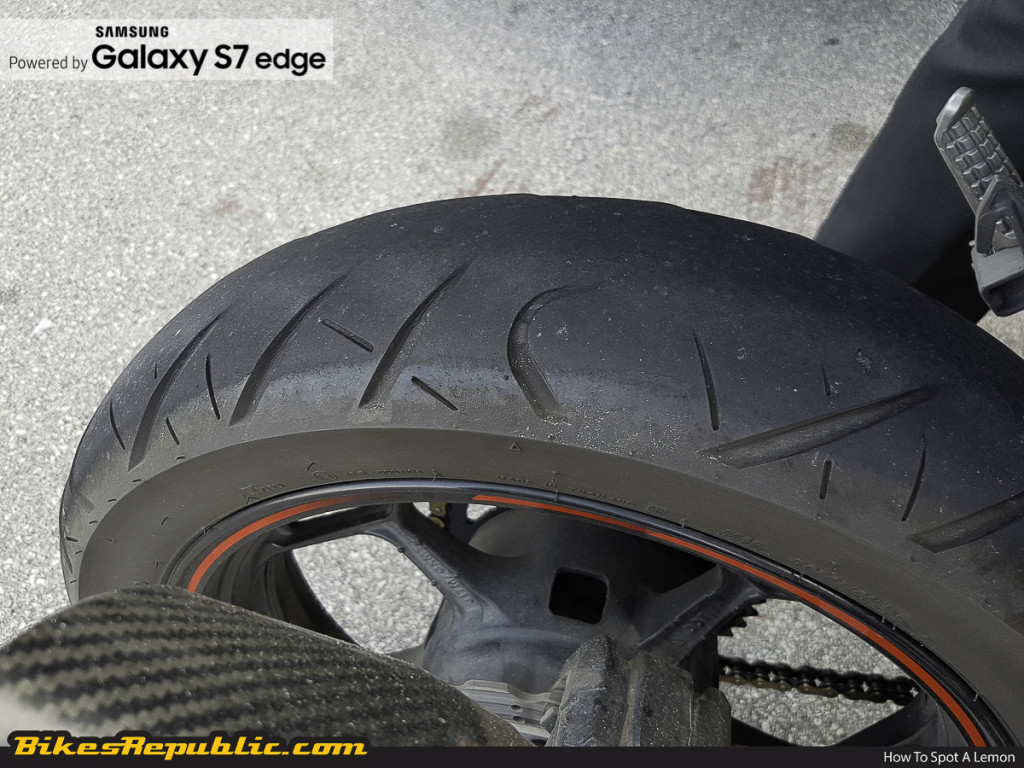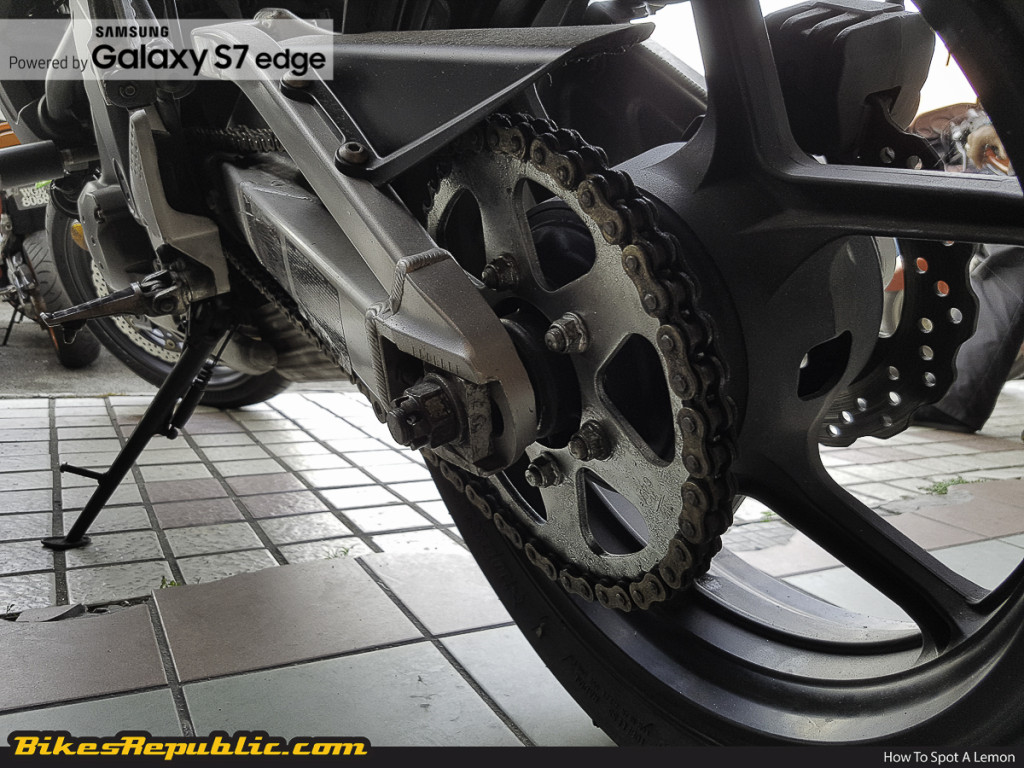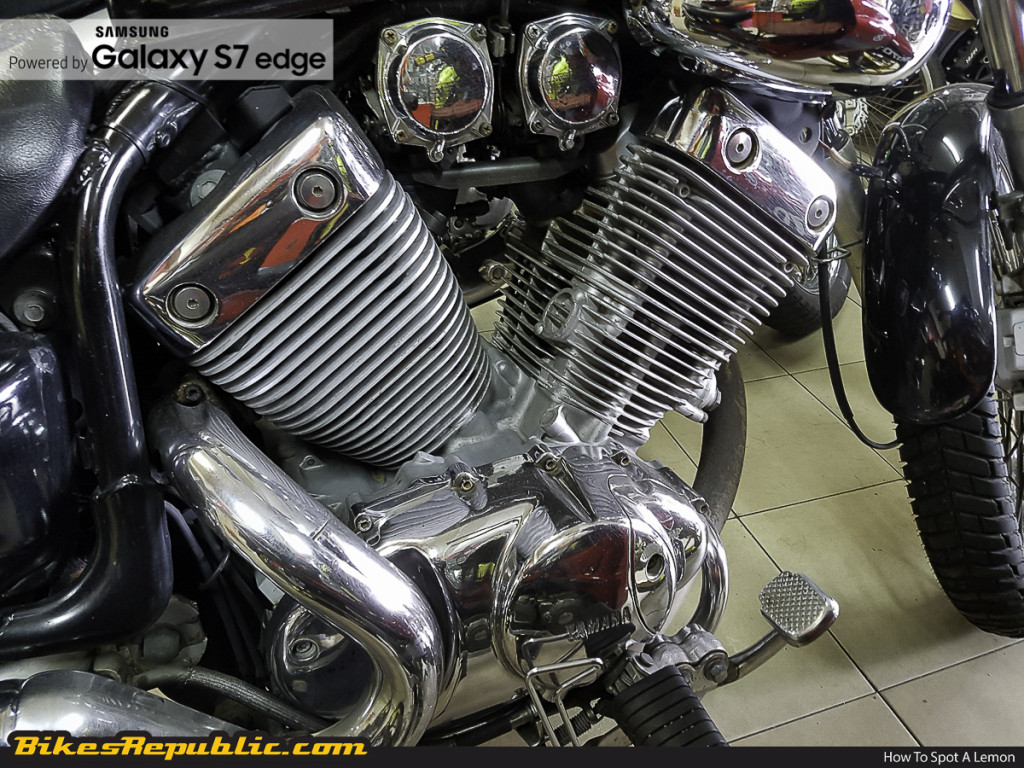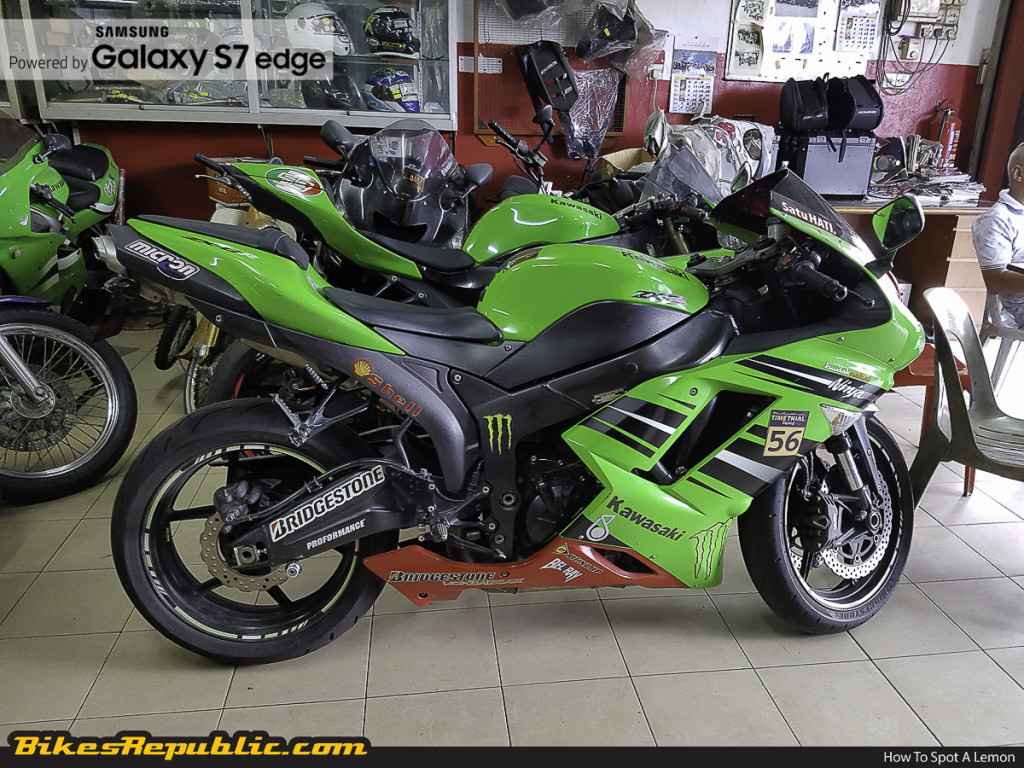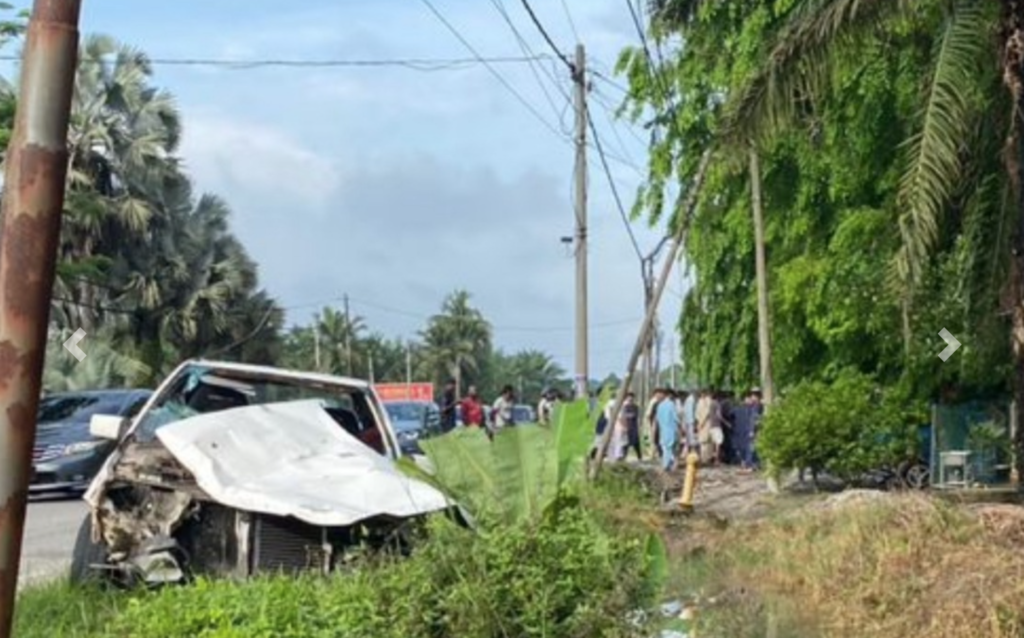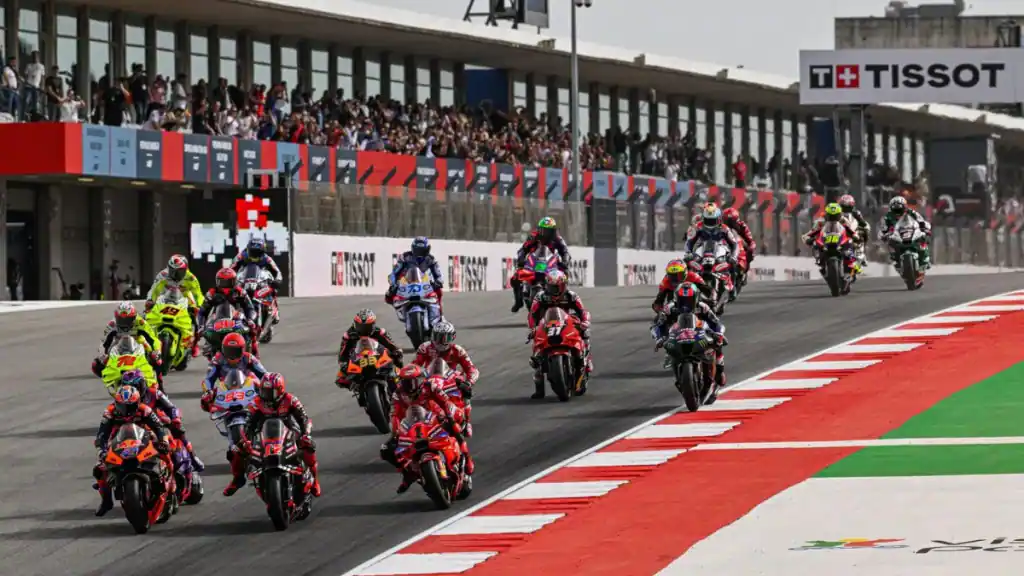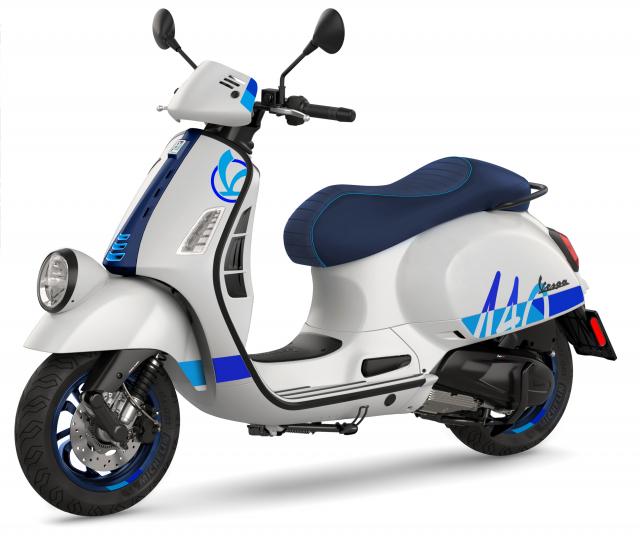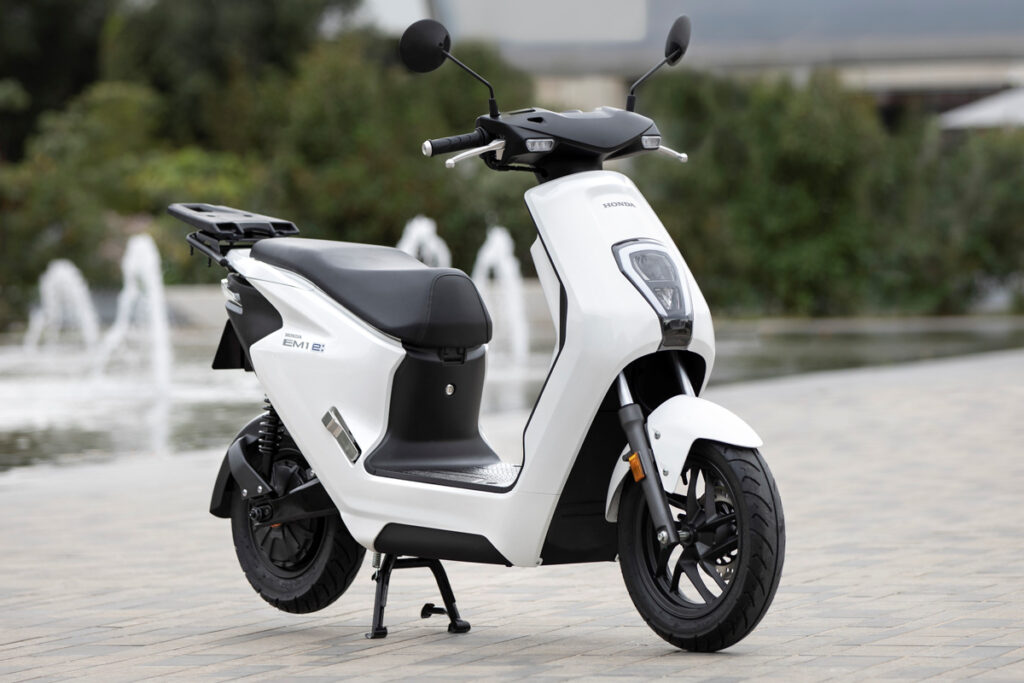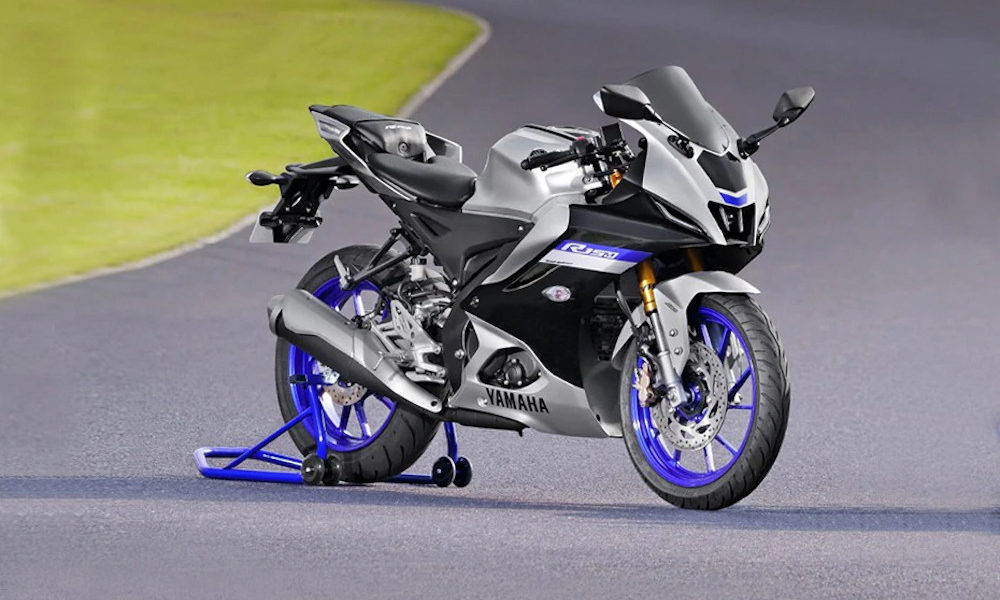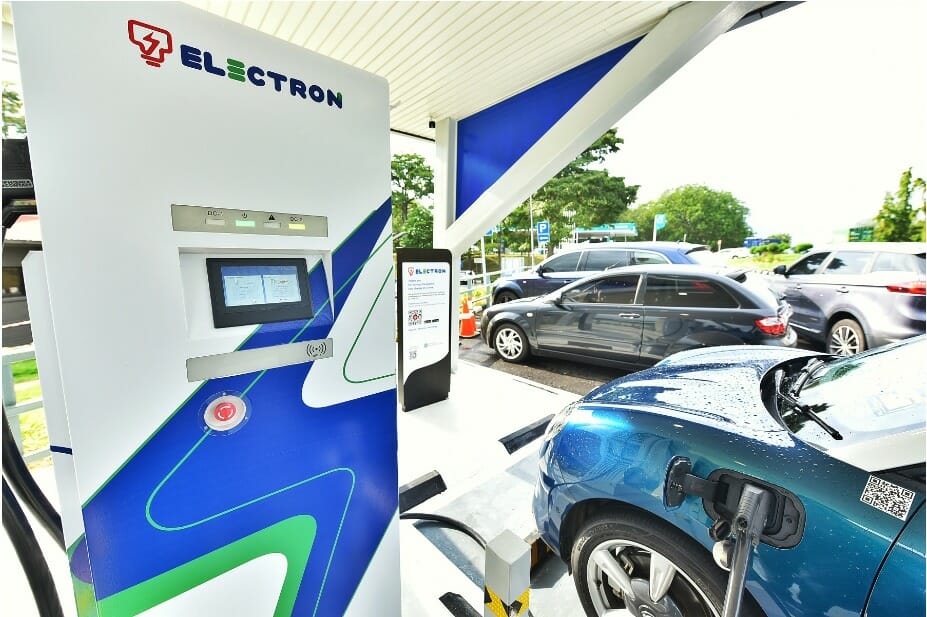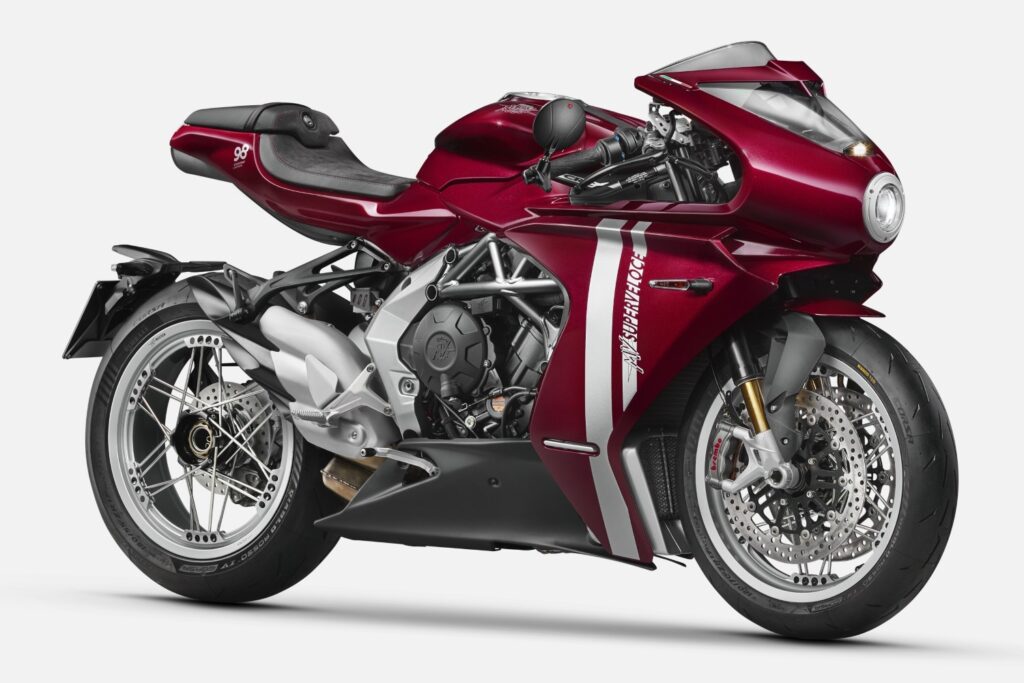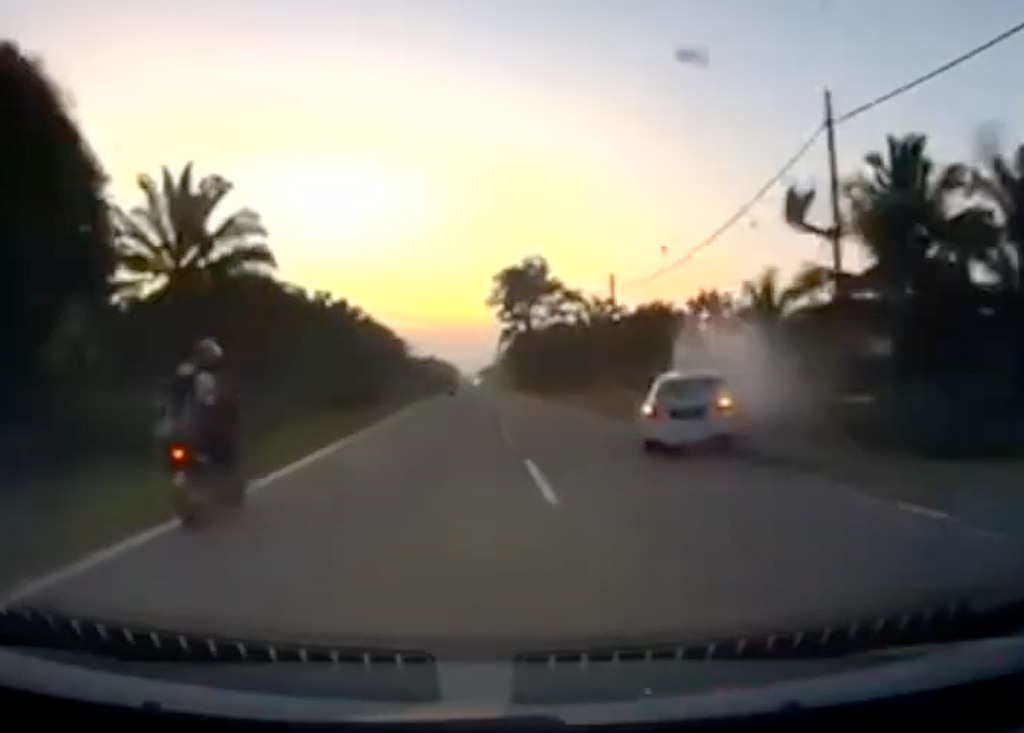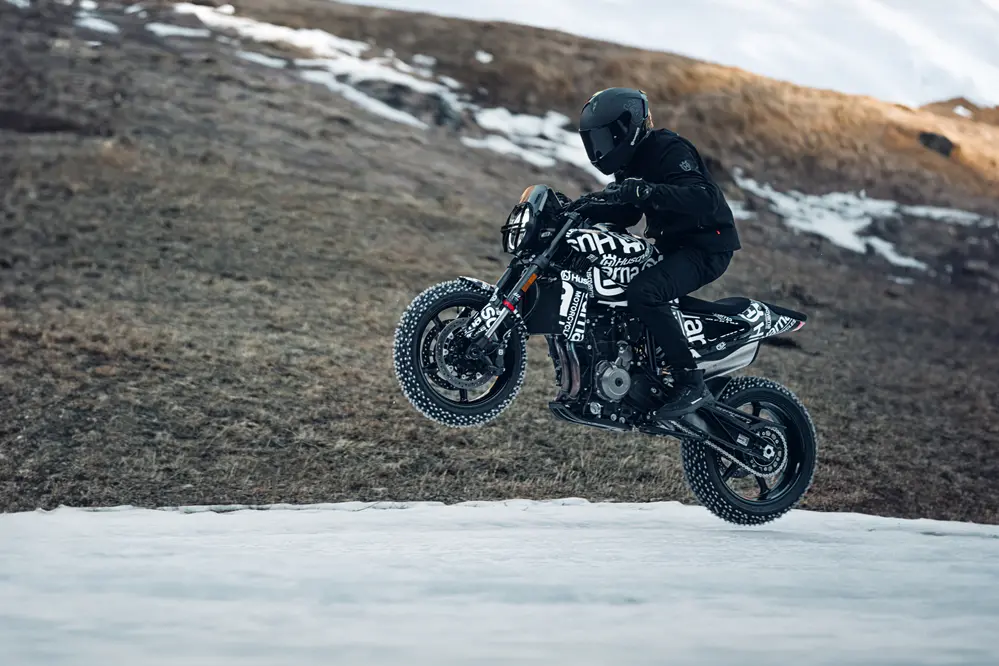A quick guide on how to spot a lemon when shopping for used bikes.
Shopping for used bikes, whether privately or from a dealer, can be a frustrating and worrying experience. Without a bit of expert help it’s so hard to know you are making the right decision.
Let us show you how to go into a deal knowing what to look for, which questions to ask and how to prepare yourself mentally.
Wheels
Potentially lethal cracks, splits and dents are often hidden with filler and a coat of paint. Run your finger over any discolored or suspicious areas.
Scratched or chipped paint because of countless tyre changes can mean the bike’s been raced or been to the track a lot.
Forks
Weepy fork seals can be disguised with a bit of tissue under the dust cap. Check the stanchions for scratches and pitting. Lift the dust cap and inspect.
Fairings/bodywork
Stickers, frame guards, non-standard paintwork and crash bungs. They don’t always mean a bikes has been dropped, but look closely and ask questions.
Head bearings
Loose head bearings are often the price of heavily-landed wheelies. Feel for notchiness when the bars are turned.
Electrics
Check that the indicators flash at the correct rate, the headlights and tail lights work, that the horn sounds and the start-up sequence is normal.
Check the headstock and front fairing for tape or zip-ties. Most accident bikes are put back together almost never fitted with the OE reatainers that keep the wiring loom tidy and out of sight. Common with bikes that have been raced or suffered a frontal crash.
Aftermarket parts
OE parts are expensive to replace-a standard exhaust will often cost at least as much as the priciest aftermarket item. If the potential bike is fitted with a host of aftermarket goodies, ask for the OE parts to be included. If it doesn’t, ask why not. Check everything. Bars, bar ends, screen fittings, exhaust can, mirrors, seat unit and wheels.
Most aftermarket paint schemes are there to cover up damage. OE stickers are expensive, so you’ll find that people use lower quality aftermarket ones. They are of a lower grade and are almost never in the right place.
Frame/swingarm
Polished frames and swingarms look the part, but they can also hide scratches that would make the bike an insurance write-off.
Equally, dented frames can be covered up with filler and then sprayed up to mask the damage.
Frame Lock stops
Look at these if you suspect the bike’s been down before. Situated on the frame, the headstock, and lower yoke they’re the little bits of metal that prevent the bars from trapping your thumbs on full lock. It’s easy to see if it’s been welded back on or been replaced by a screw. A missing one suggest frontal damage. Stay away.
Brakes/discs
Examine the discs for warping. Lift the front and spin the wheel. It should rotate freely with no scuffing noises, which could indicate a warped disc. Feel the edges for lips. Check the surface of the discs also for scoring marks, a telltale sign of pad neglect, which will tell you a little bit about the owner.
Wheel bearings
Lift the wheels off the floor one at a time. Rock the front wheel side-to-side and the back up and down. Any free play means bearings or bushes need replacing.
Tyres
Check they’re not mis-matched, bald, scalloped (front), cut, punctured or incorrect size for the machine (180-section tyres on a 160-section rear for instance).
Chain/sprockets
Check the chain is in good condition and correctly adjusted. Check for tight spots by rotating the rear wheel. If the chain lifts on the top run then it’s worn and you’ll feel surging on a constant throttle. Worn sprockets have hooked teeth. Make sure there is plenty of adjustment left. If you can pull the chain off of the back sprocket by more than half a tooth’s depth at its furthest point, it needs replacing.
Engine
Check the level and colour of the oil, it should be a nice golden colour, not thin and black. Check for blue smoke on start up from cold (and check that the engine really IS cold) – it could mean a top end overhaul. Check the clutch action is smooth, no coolant leaks and oil leaks.
Frame
Get someone to hold the bike upright with the bars straight. Step back, get on your knees and check the trueness of the frame. If the wheels are out of line then the frame’s bent. Stand up and you should also be able to see if the subframe’s in line. Also check steel subframes for heat and stress marks suggesting it’s been twisted back into line.
So there it is, take your time and best of luck in finding your bike. Remember; people will go to any lengths to cover up problems.


